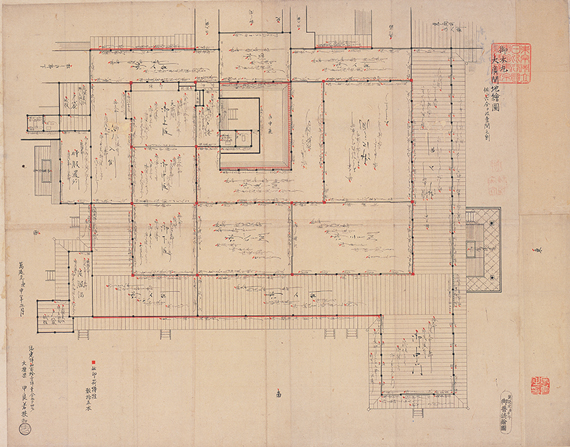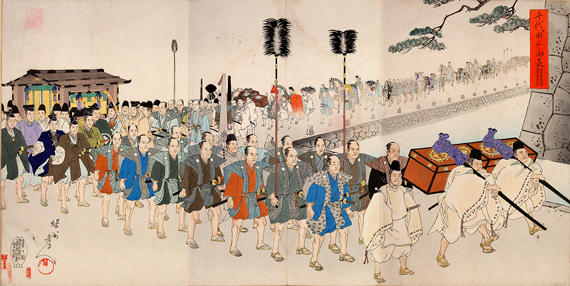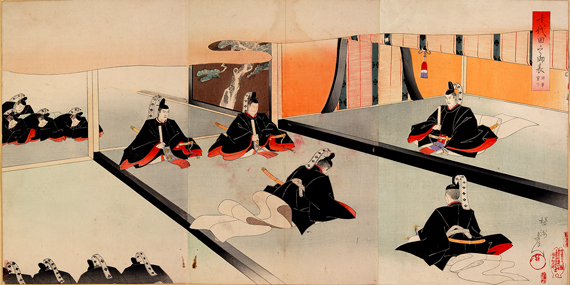A Visit in the Great Edo
A close-up on Edo castle / Cultural enlightenment' spotsŌ-hiroma and the dignity of the Shōgun
[Important cultural property related to the construction of Edo Castle]
Duplicate of the original by Kōra Wakasa
The Omote area of the palace contained the formal rooms Ō-hiroma, and Shiro Shoin and Kuro Shoin drawing rooms where a number of different ceremonies and events were held.
Closest to the entrance, the Ō-hiroma was made up of areas such as the upper chamber, middle chamber, lower chamber, second chamber, third chamber, fourth chamber, tatami-matted corridors, and planked verandas. The hall spanned over 50 meters from east to west, making it the largest room in the castle. The coffered ceilings of the upper, middle, and lower chambers looked like a grid sheet. Each level up to the upper chamber was higher than the ones before, as did the floors, and featured more splendid ornamentation. The partitions between rooms were adorned with those motifs considered most formal—pine trees and cranes—painted by artists of the highest standing, further enhancing the majesty and solemnity of the Ō-hiroma.
(Shōgun Senge No Tame Shukuga Shokō Tairei Gyōrestu no Zu)
Illustrated by Yōshū Chikanobu
1897 (Meiji 30)
Important events were held in the Ō-hiroma, such as the New Year’s ceremony and audiences with foreigners. By viewing the Shōgun seated in the upper chamber from their seats assigned to his household status, each Daimyō inescapably recognized the master-servant relationships. The formal Ō-hiroma served as the ultimate stage set for exemplifying the dignity of the Shōgun.
* To view more explanation, please click the each image.




